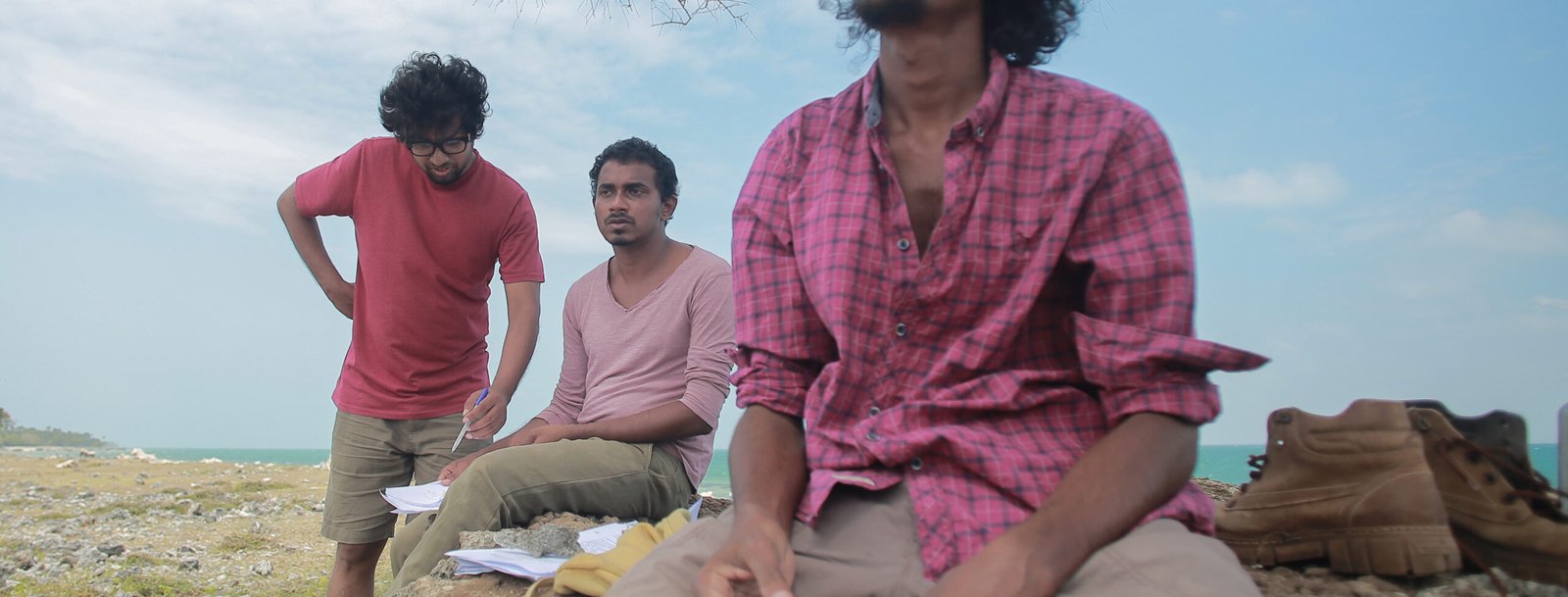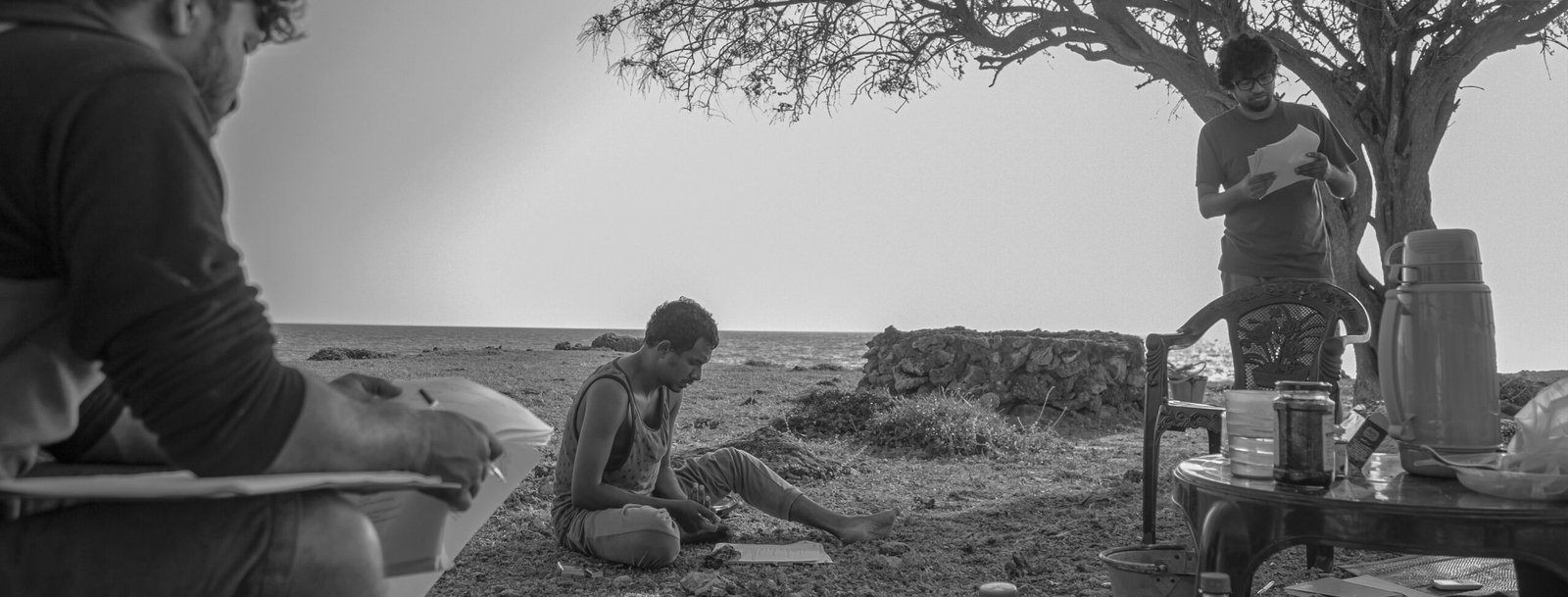
Writer’s Perspectives
If one gets to delve deeper into the self-narration underlying this film, it is possible to feel close and relatable due to any type of feeling related to a situation of love. More than a decade has passed since this essay began its systematic construction. In the journey of life passing through different periods, the definition of love has moved like a repeating cycle, getting changed and being challenged from time to time.
“Love gives rise to love. Love gives rise to hatred. Hatred gives rise to love. Hatred gives rise to hatred.” – Buddha
In any of the above situations, people will be sad. Will be confused and shocked. People cling to emotions like raga, hatred, and delusion, so they go to extremes and sink into the ego, even to the point of killing themselves. Its other extreme is the possibility of suffering, identifying the cause of suffering, eliminating suffering, and exploring ways to eliminate suffering.
In many such cases, the hidden nature of ‘Thrushna’ (Lust) can be detected, which manifests itself in the form of love or affection. Its next level is when it becomes anger and hatred. Sometimes it becomes a conflict between the outside world and oneself. It can develop as hatred towards oneself, within itself.
Based on my strong belief that this essay will be a reason to understand this situation, this essay was completed as a long monologue.
A monologue can be defined as an expression of the events, ideas, feelings, or memories that come from within the mind of a person verbally or in writing, or through a language in a creative way. Built in their mind, the opinions, and beliefs held by people regarding the feeling of affection or love, imbued in such statements, takes contradictory and irrational dynamic nature under different situations. The sensitivity built up through emotions starts to function solely on emotions, preventing them from seeing reality. When taken to its extreme, the person with a misled consciousness becomes very vulnerable. Such is the gravity of the situation that it may drive a person to consider even the ultimate act of suicide.
In this self-narration, there is no idea of a character, an age, a gender, time, or space. This can be experienced by any person in any space, at any time. In this essay, there is the common human nature that repeatedly arises, goes into friction with itself, continues the same situation, and goes through the different forms of ‘Thanha’ such as love, affection, hopes, and desire as a repeated cycle and becomes delusional and confused.
– Jayampathi Guruge (Jam)
SpaceEka Artist’s Residency
2023 April
What is the subtext imbued in an individual’s self-narrative when creating the script? What is the idea expressed about the unspoken thing, in what someone says? Do the objectives hidden inside a person’s inside, seen in the real words in the same way? What is the relationship between thought-speaking and actions? As well as such external forms, from non-objective concepts such as existence and reality, time and space, mind and thoughts, self and world, to personal feelings such as love, desire, sadness, happiness, hope, and hunger, were explored through various approaches. The main aim of this process was to go beyond the existing models and search for a new model required by the context, in doing so the exploration of a new cinematic approach was needed.
The script and screenplay of this film, which was built through several stages, take a different form than the format of a script built for a movie. Based on a self-narration and turning it into a script copy, the original self-narration was looked at from different angles and its content was investigated from new dimensions. There, new meanings were highlighted by reinterpreting the original text and looking at it from different perspectives. In the first step of creating the script, the process of turning the monologue from the original script into three characters was done.
Throughout the script, each character oversteps their characteristic limits, then grasps and absorbs the other character, and the position depicted in the same character at one moment is depicted again from a completely different position. The nature of the mind changes from moment to moment, irrationality and rationality, deceitfulness, and honesty are depicted in each character separately but with a common unity. The restless and dynamic nature of the human mind is embedded in the characters.
In the preparation of the script, the self-narration embedded in the monologue has been taken beyond “a nature of the turbulent mind of an individual” and used to describe the nature of a person’s inner mind. While portraying “various natures in one person” through several characters, the unity of the whole should be maintained while maintaining diversity.
In terms of the time and space of creation, a complex and dynamic model has been adopted that goes beyond reticence in the construction of cinematic reality. Therefore, one of the main characteristics of the film is that there is no linear flow of time or space in it. In accordance with the concept of the film, the design has been presented without relying on the general agreement that has been inspired by reality. Also, in order to bring a concept that is completely outside the perspective of “the world and me” which is inherited by human nature, we have to use cultural tools such as language, clothes, backdrops, etc. that represent the common reality. But we have to look at them from a new perspective distanced from conventional meanings. Therefore, it is a challenge to depict non-objective philosophical concepts such as “individuality, existence, and reality” through self-narration through cinema.
For many years, I have been searching for an alternative new method for cinematic narrative by systematically studying the nature of Buddhist literature and sutra sermons, their representation of time and space, how events are connected to each other, the pattern in the background details, how to describe character traits and mental traits, etc. The narrative style of this film was built as a result of a study conducted for some time with the aim of finding an alternative narration. Instead of telling a story with a beginning, middle, and end or moving and shifting around time and space to create emotions through a complex format, here it was attempted to make it an experience of cinematic narration, based on the concept of the film. This is why this film can be introduced as an attempt to break the boundaries of “a film should be like this” or “this is how a story can be told” and create an “interpretation through experience” in the viewer. And there is an attempt to make cinema an experience for the audience by taking it beyond storytelling. In other words, this work is an attempt to create an emotional system and space for self-exploration. It is a case of using “me” to question “I”, the world to question the world, and the image to question the image.
– Prasad Aluthwattha (Alutha)
SpaceEka Artist’s Residency
2023 April
